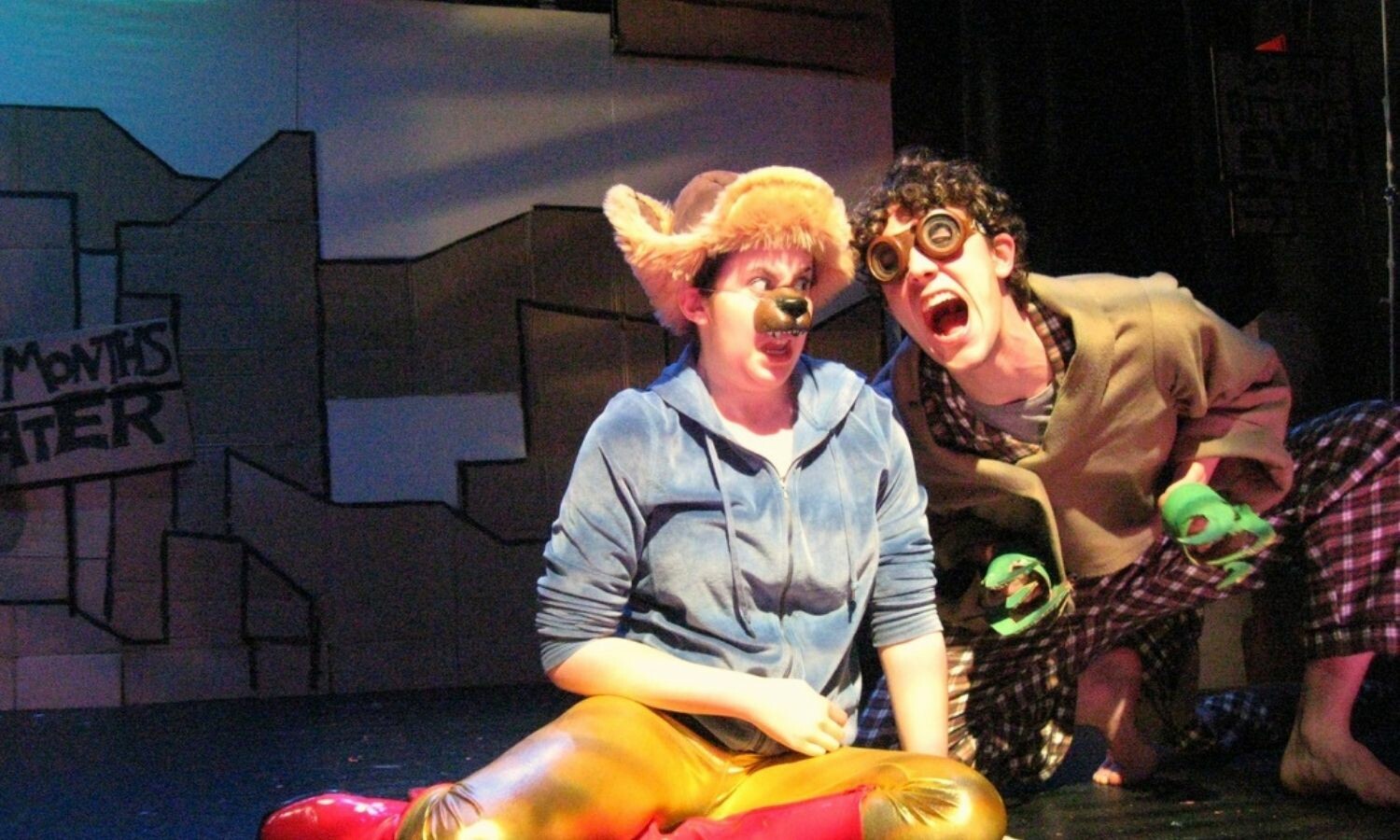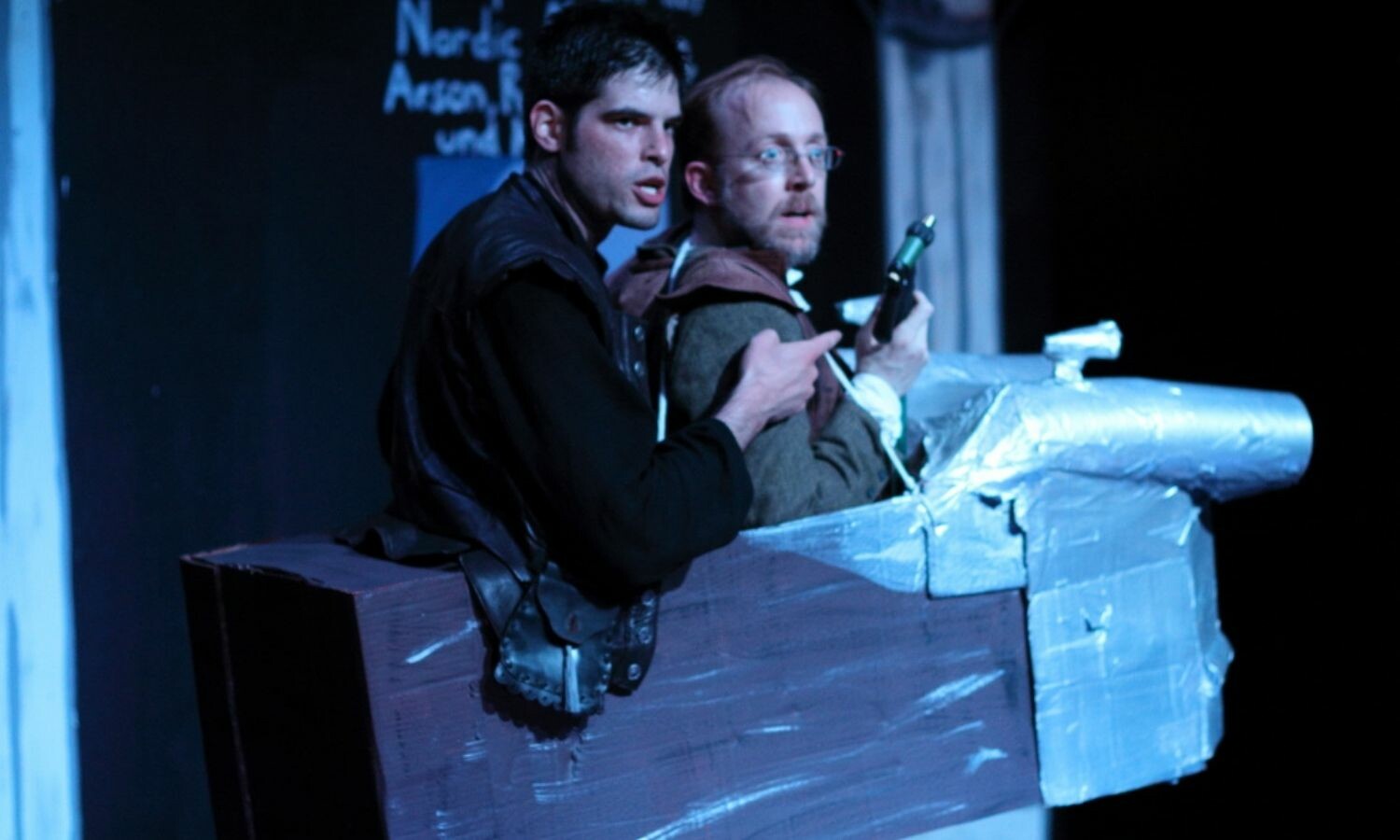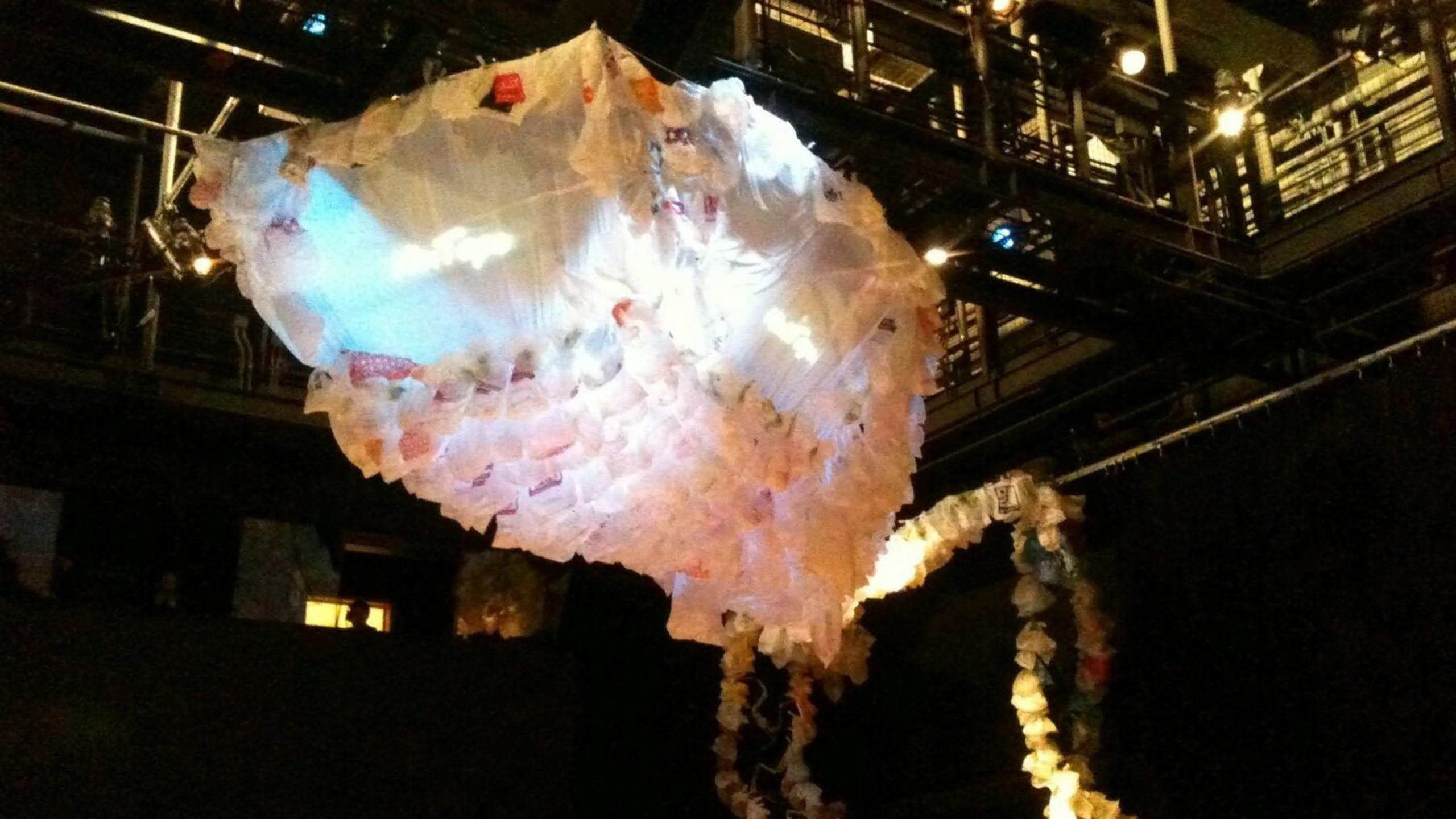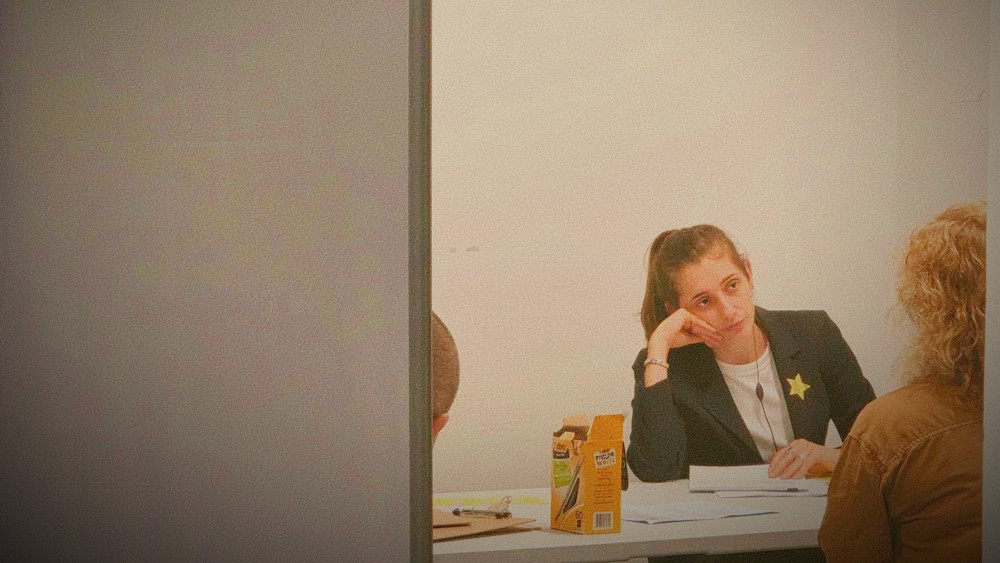There I was: twenty-seven, with a double major in theatre and English, sitting in my office on a Friday night doing math. That night’s calculation? Program order. Six weeks of shows, six shows per week, one hundred forty-two seats. The producers just knew they had a hit on their hands. The printing company required batches of five hundred, so… we ordered five thousand.
Three months later, I arrived early Sunday morning to assess the venue after the company’s load out. There I found four unopened boxes still in the closet. Four thousand programs. I had to carry them to the recycling bin myself.
For three years I managed the five performance and rehearsal venues at the Boston Center of the Arts, where theatre companies large, small, and midsized rehearsed and performed fifty weeks a year. I oversaw every aspect of the venue operation, from booking to load in to load out—including those damned dirty programs. I had a front-row view of the work and waste that goes into—and comes out of—even the smallest theatrical undertakings.
What I saw made me ill. Productions that lasted two to five weeks sent dumpsters full of lumber, steel, and plastic to landfills. Thousands of pounds of programs were going off to the recycling bin every year. That waste will sit there for decades or centuries.
So, when I started to produce and direct theatre of my own, I set out to do it differently. My aesthetic would forefront sustainability, a reuse/recycle/upcycle mindset, and strive to minimize waste while maximizing theatricality.
In years of doing this, I’ve followed three basic guidelines:
- State this mission from the outset and engage collaborators and community in the goal.
- Research and reach out.
- Allow sustainability to guide bold aesthetic choices, rather than the opposite.
The Invitation
My first full production with this mindset was Bear Patrol: an adaptation of The Wizard of Oz set in a post–climate disaster Boston featuring mutant DJs, a reality show competition, and dancing genitalia. (What do you mean now I know why you self-produced your plays?)
The world and story of the play fit the reuse/recycle/upcycle mission to a T. From the jump, we engaged designers and the full company in the mission. Our set designer, Sean A. Cote, landed on a concept of creating a version of the Boston skyline on the back wall of the theatre. To make this happen, the whole company collected cardboard boxes from packages and package stores.
Apart from the cardboard skyline, we kept the set pieces minimal: a few painted stage cubes (inherited from another local indie company), a few curtains, and a few built out wooden pieces.
This is where research and reach out kicked in. I scouted shows closing two to three weeks before we opened, paying attention to the components of their sets. If they had something potentially useful to us, I reached out to ask if they had plans for the piece after strike or if we could take it off of their hands if their plan was to scrap it. The vast majority of the time, the plan was to scrap it. Most production managers I spoke with, upon learning of our mission, were happy to keep the piece out of the landfill and give it to us to reuse.
After our run, we sought new homes for all of these resources. Using social media and networks of theatre and performing arts groups, we shared a list of these pieces to keep them from the landfill.
Total cost for set pieces on Bear Patrol: < $100.
Total waste: some fabric scraps and cardboard boxes we recycled (which we ourselves pulled from recycling). For everything else, we found a new home.

A few years later, as an artist in residence at Beaver Country Day School, I brought my mission of sustainability to co-creating and directing the play mixtape, which was devised in collaboration with the students. The set designer, Kenneth Burt, wanted a functional projection surface, along with a stylized scrim-like object that could be lit with a variety of colors for mood shifts. He came up with what we called “The Brain”: a huge, jumbotron-like projection surface floating above the stage, with limbs creeping down like a four-poster bed with jellyfish tentacles.
To make this theatrical monstrosity, we needed a ton of plastic bags. We put a call out to the whole school. Announcements went out at assemblies and via emails. In the atrium outside the theatre, we posted a sign and a bin, and students and teachers brought plastic bags from home.
One thing every student asked: “What is this for?” The project intrigued them—even more so when we told them what we were making. The community ask gave us a way to talk about the project, as well as our sustainable mission, and became a new hook into the show. By including the community, we not only created a truly spectacular piece of stage sculpture, but we drove conversations, interactions, and ticket sales.
Oh, and those hundreds of bags? Kenny and crew made sure they all made it to a local plastics recycling facility.

Minimize Waste; Maximize Theatricality
For all my projects, I choose to bring to the forefront the green end of my mission; sustainability, more than any aesthetic, drives every design choice. I introduce this core value to design collaborators from the start of the conversation. Beginning with sustainability means letting go of other aesthetics. It’s nearly impossible to recreate the detailed multiroom family home with bookshelves and a kitchen that is all too present on American stages if inherited and upcycled supplies are used. Rather than pretending to stage a facsimile of reality, we aim to maximize theatricality and minimize waste. I have found over and over that designers respond with enthusiasm to this challenge, which leads to choices that are artistically rewarding for the show and audiences.
In another one of my projects, From Denmark With Love, my collaborators and I explored sustainable, minimalist design in a play that demanded maximalism and over-the-top choices. This play reimagines the story and characters of Hamlet as a James Bond thriller set in the thirteenth century. Superspy Hamlet sets out on a mission to find his father’s killer with the help of his right-hand man and weapons expert Horatio and his girlfriend, Ophelia Balzac—a Bond girl that Hamlet can’t decide whether to trust or lust.
The play relies on many of the Bond franchise standards: exotic locations, dramatic fights, and thrilling action sequences. Bringing it to life on a small budget with a green design aesthetic wasn’t easy, but—much like 007’s missions—led to some thrills.
The show climaxes in an epic and impossible action sequence: As Claudius flees by boat, Hamlet and Horatio give chase across the Baltic Sea, torching the evil king’s ship with a flamethrower. Claudius swims to safety on the Polish coast—until Hamlet hunts him down for the ultimate fight scene.

How did we bring a boat chase to life on an eighteen-foot stage, without expensive effects, while still giving the audience a thrill? We created a puppet show utilizing a wild assembly of props and models, with our cast of nine using every hand (and some other appendages), all choreographed to music. A piece of blue fabric stood in for the sea, behind which two small-scale boat puppets gave chase. Obstacles came and went—lending opportunities for references to classic Bond action sequences like a double-taking polar bear, surfing a tsunami, and a loop the loop ramp with a slide whistle.
The chase culminated with Claudius, Hamlet, and Horatio emerging from the ocean in two wearable boats—made, of course, from cardboard. But how to stage a flamethrower torching Claudius’s ship? As Hamlet launched the flamethrower, a visible stagehand appeared from the dark to hold a stand fan under the hollow stern of Claudius’s boat—blowing yellow and red crepe paper up from their hiding place into a waving fiery frenzy. This incredibly simple and cheap solution, made of recyclable materials, received riotous laughter and raucous applause each and every performance. It was far funnier, more theatrical, and truer to the spirit of the play than any attempts to fake realism with a boat chase and fire.
Cost for set of From Denmark With Love: < $350.
Total waste: less than one trash bag.
Those Damn Dirty Programs
Theatre programs are my personal bane. They are the hill I will die on. Sure, they can be recycled, but only after the immense resources used to print, box, and ship them—not to mention the additional resources used to transport them to recycling plants and the energy required for the actual recycling.
In the 2018–19 season, 14,800,000 tickets were bought to Broadway shows. That’s 14,800,000 programs. And let us not forget that Broadway—while massive in revenue and quantity of sales—is a relatively small percentage of the theatre in the United States, not to mention the world. Multiply that figure by regional theatres, national theatres, fringe and community theatres… and the number dizzies.
Over the past year, printed menus have disappeared and been replaced by QR codes in nearly every restaurant. This adjustment makes life easier for everyone because it eliminates updating, printing, and maintenance for restaurants and it eliminates waiting and clutter for guests. Adopting similar practices can help the theatre field by eliminating time and resources to print (and recycle!) programs, as well as staffing resources for passing out and cleaning up programs at performances. With online programs, productions can offer a deeper dive into dramaturgical content, including video interviews with playwrights or designers. Digital programs can make theatres more resilient as well by making it easier to swap in last minute casting changes and rotating advertisers—including video ads.
With all of the advantages to digital programs, it’s time to ask: When will we bring the curtain down on printed programs?
Starting in 2012, I eliminated printed programs from every project over which I had producing control. In order to avoid printing, we make all program information available online and links to that information easily accessible at performances. We also create show-specific ways to convey information to audiences and celebrate the artists involved.
For Bear Patrol, we made on-site programs in the style of a panhandler’s sign: hand-painted on scrap cardboard, placed throughout the lobby. In From Denmark With Love, we incorporated credits into the show after the 007-esque pre-credits action sequence. Behind a screen, actors danced with thematic props and cardboard cutouts, casting shadows that allowed for clear reading of the credits projected on the screen.
The threat of printless programs certainly raises one spectre (any Bond fans out there?): the autograph hound. Yes, many people love to collect playbillsand autographs but this is a relatively recent trend for which we can also find digital solutions. I urge you to imagine a world with digital playbills that—since there’s no limit to space in printless programs—have blank pages for autographs and a playbill app that allows stars to autograph with their fingers, saving the signature digitally in perpetuity.
During the run of the first show I got rid of printed programs for, I expected some pushback but got very little; this was a small indie theatre company whose audience was primarily made up of people who didn’t typically go to theatre. When people asked for a program or asked why we didn’t have them, we explained our green mission and directed them to the website. The vast majority of people were understanding of, if not supportive and enthusiastic about, our mission. One person voiced a pointedly negative response: he’d collected a program from every single show he’d ever seen so why couldn’t he have one now? “Because we don’t have them,” we said. He wasn’t particularly understanding but that was one person out of about eighteen hundred.
Yikes. Math, again? Let’s just say that’s considerably less than a percentage point.
Cycling Through
Let me recycle the takeaways:
- Engage your collaborators and community in your mission. Be vocal and open about it.
- Research and reach out to others who can help.
- Allow sustainability to drive theatricality, not the other way around.
All of this requires not only tremendous effort, creativity, and a buy-in from your collaborators, but also demands that someone be thinking of sustainability from every angle.
Scouting for design supplies before and after a production is, admittedly, time-consuming. But it is not all that difficult. It saves money, it saves some of the time it would have taken to go on a lumber run, and it keeps an awful lot of waste out of landfills. Many people will want to help keep things out of a landfill, especially if it is made easy for them.
So how can more productions do this? One idea is for theatres and productions to hire a designated person whose job it is to consider sustainability—to ask how to source resources more sustainably and operate rehearsals in an energy-saving way. Before there were fight choreographers, there were accidents. Before there were intimacy choreographers, there were unsafe circumstances for staging intimacy. Sustainability in theatre is a major problem, so we can make it someone’s job to fix it.
Heck, it could be anyone’s. Every individual can bring this perspective—even just a little bit—to every collaboration. That’s your mission, 007, should you choose to accept it. What? That’s a Mission: Impossible quote? Well, consider it upcycled.
“This piece, “It’s Not Easy Being Green” by John J King, was originally published on HowlRound Theatre Commons, on September 14 2021.”
Extended Play is a project of The Civilians. To learn more about The Civilians, visit us at TheCivilians.org.










